 I was recently discussing Nauvoo with an individual who appears inclined to believe that Joseph Smith was just a pervert. I referred them to my Faithful Joseph series, but they indicated that the initial bit they scanned made them think it was just a remix of Brian Hales[ref]Brian Hales has been described as someone who has a hypothesis and is assembling the data to support that hypothesis. Brian has assembled a prodigious amount of information at his website josephsmithspolygamy.org.[/ref] and the RLDS view.[ref]The traditional RLDS view was that Joseph and Emma fought polygamy, that Mormon polygamy originated with Brigham Young and various seducers Joseph denounced during the Nauvoo period, see in particular the writings of Richard and Pamela Price at restorationbookstore.org.[/ref]
I was recently discussing Nauvoo with an individual who appears inclined to believe that Joseph Smith was just a pervert. I referred them to my Faithful Joseph series, but they indicated that the initial bit they scanned made them think it was just a remix of Brian Hales[ref]Brian Hales has been described as someone who has a hypothesis and is assembling the data to support that hypothesis. Brian has assembled a prodigious amount of information at his website josephsmithspolygamy.org.[/ref] and the RLDS view.[ref]The traditional RLDS view was that Joseph and Emma fought polygamy, that Mormon polygamy originated with Brigham Young and various seducers Joseph denounced during the Nauvoo period, see in particular the writings of Richard and Pamela Price at restorationbookstore.org.[/ref]
This individual asked if I could assemble a Reader’s Digest version of my 29+ posts on the subject, which might inform without all the bothersome reading. This is that digest version.
I should note that this version tells the events chronologically, and does not therefore make it clear which evidentiary clues guided formation of this framework. Some other time I should write up why I argue that the “Joseph as sex fiend” framework is fundamentally flawed from an evidentiary and logical standpoint, including why I am not persuaded any of Joseph’s plural wives actually slept with him.
A Faithful Joseph – When I was a mere teen, I encountered troublesome possibilities regarding Joseph Smith’s polygamy. This shattered the simple testimony of my childhood. Even though I eventually came to regain a full testimony of Mormonism, it took decades, and I still didn’t have an explanation for Joseph Smith’s polygamy. Then I felt directed to write about (and therefore study) the lives of my three generations of ancestors who were plural wives. In doing so, I realized that there is something odd about the reproductive history of the women Joseph covenanted with prior to his death. In addition, modern DNA analysis cannot prove any children born to Joseph’s plural wives were engendered by him, with only one case even being inconclusive.
Why would a Loving God Demand Polygamy? – Though most are content to suppose plural marriage was about sex (and Joseph’s desire to have sex), Joseph claimed God had commanded the restoration of plural marriage. Christianity had embraced strict monogamy in the wake of the Pope’s Impediment of Affinity in the 1050s. If strict monogamy were to continue when the New and Everlasting Covenant was implemented, then men could only be sealed to one of their earthly wives, and children of women who were not sealed would remain eternal orphans. Thus there was an eschatological reason for the God Mormons believe in to make it clear that the occasional plural marriage was acceptable.
Precursors to Joseph’s Polygamy – People use their modern lens to interpret the facts of Joseph’s life. But medicine was primitive and lacked understanding of bacterial infection. There were sexual variations being introduced in the name of religion, including in areas that would yield many Mormon converts. And others were having visions indicating that God the Father and Jesus Christ wished for a more egalitarian religion that honored families and recognized all as children of God.
The 1831 Revelation Regarding Plural Marriage – Mormons often presume that the revelation commanding Joseph to embrace plural marriage didn’t occur until the 1840s. However it is clear that the original revelation occurred early in 1831, while Joseph was translating Genesis. This timing allows us to see the arguments between Joseph and God, betraying Joseph’s reluctance as well as how central this doctrine was to later eschatological teachings regarding the multiple degrees of heavenly glory and the salvation of all as Jesus taught in John 5. I contend that Emma Smith likely knew about the commandment her husband had received.
 Of Wives and Handmaids – As we consider the women who are known as Joseph’s plural wives, it is helpful to understand the many different reasons why women were asked to covenant with Joseph. These include women Joseph was commanded to marry (e.g., Zina Diantha Huntington, Mary Elizabeth Rollins), women Joseph would ask to help in the investigation of Nauvoo seductions (e.g., Sarah Cleveland, Elizabeth Durfee), and women whose families wished to create an eternal bond with Joseph’s family (e.g., the Huntingtons, Helen Mar Kimball).
Of Wives and Handmaids – As we consider the women who are known as Joseph’s plural wives, it is helpful to understand the many different reasons why women were asked to covenant with Joseph. These include women Joseph was commanded to marry (e.g., Zina Diantha Huntington, Mary Elizabeth Rollins), women Joseph would ask to help in the investigation of Nauvoo seductions (e.g., Sarah Cleveland, Elizabeth Durfee), and women whose families wished to create an eternal bond with Joseph’s family (e.g., the Huntingtons, Helen Mar Kimball).
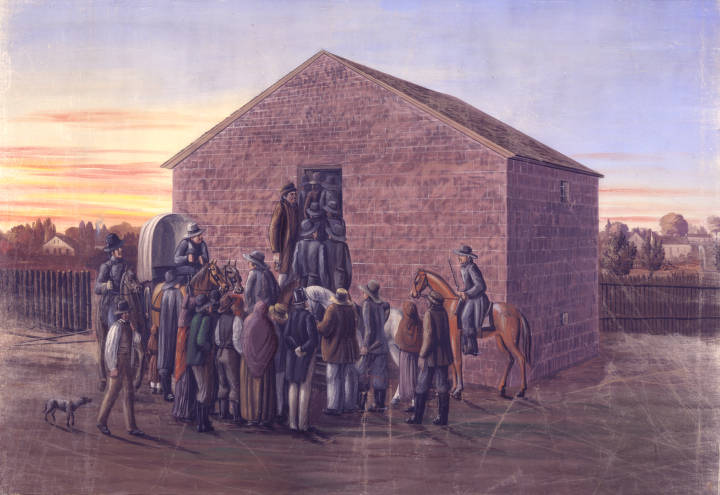 The Decade of Delay – It’s fully ten years between the revelation received in February/March 1831 and April 1841, when Joseph marries Louisa Beaman. I talk about a number of polygamy-related situations, including the possible marriage to Fanny Alger, the claim that Hannah Dubois was a wife, and Jared Carter’s attempt to acquire a second wife.
The Decade of Delay – It’s fully ten years between the revelation received in February/March 1831 and April 1841, when Joseph marries Louisa Beaman. I talk about a number of polygamy-related situations, including the possible marriage to Fanny Alger, the claim that Hannah Dubois was a wife, and Jared Carter’s attempt to acquire a second wife.
 Six Funerals and a Blessing – While most people figure Joseph just got powerful enough to bid women to his bed, I lay out a series of deaths that informed Joseph Smith’s concept of eternity, which came to include proxy ordinance work on behalf of the dead. This includes a deadly August 1840 attack on Joseph Smith’s neighbors, which killed a woman and her child. The final straw was the death of Joseph’s father, and the final father’s blessing that told Joseph he wouldn’t die until all that had been ordained had been accomplished. For a man who might have hoped to pass the commandment related to plural marriage to a successor, such a “blessing” would not be welcome, as Joseph’s actions after the blessing support.
Six Funerals and a Blessing – While most people figure Joseph just got powerful enough to bid women to his bed, I lay out a series of deaths that informed Joseph Smith’s concept of eternity, which came to include proxy ordinance work on behalf of the dead. This includes a deadly August 1840 attack on Joseph Smith’s neighbors, which killed a woman and her child. The final straw was the death of Joseph’s father, and the final father’s blessing that told Joseph he wouldn’t die until all that had been ordained had been accomplished. For a man who might have hoped to pass the commandment related to plural marriage to a successor, such a “blessing” would not be welcome, as Joseph’s actions after the blessing support.
Winter of the Reluctant Virgins – After the death of Joseph Smith, Sr., we see Joseph attempt to fulfill the commandment to take a plural wife. But he has the darndest time getting anyone to go along with him. Finally, in April 1841, Louisa Beaman agrees to be married to Joseph. Tellingly, she would remain childless until after Joseph’s death, after which she would bear five children in five years.
Fall of the Doctor – Dr. John C. Bennett is often believed to be either honest truth-teller going undercover to expose Joseph Smith or damned lying apostate who joined Mormonism for the express purpose of destroying the faith. However I find that Bennett evolved from a man who honestly valued the Mormon people and their faith to a man willing to create a lie to satisfy his sexual appetites. This post lays out that progression, and the little white lies that gradually led Bennett to engage in a campaign of wanton seduction. I think this is also the post where I talk about the millennia-old medical practice of inducing “uterine paroxysms” in women to relieve “hysteria,” a practice that was abandoned by the medical profession once movies made it possible to see how sexual that “medical” procedure can be.
The Angel, the Sword, and the Heron Seduction – Even though Joseph was aware of Bennett’s past and Bennett’s seduction of Sarah Pratt, he had no idea how extensive the corruption had become. A God who was omniscient and cared about Mormonism, however, would know exactly what was happening. Thus during Bennett’s campaign of seduction, we see Joseph claiming an angel had appeared with a sword, threatening to cut him off if he did not implement plural marriage. I also talk about the frigging of Mary Heron [Snider], which several scholars have laid in the pile of Joseph’s supposed conquests, but which I assert should be interpreted as an instance of the seductions carried out under the guidance of John C. Bennett.
Hunt in the City Beautiful – It appears Joseph became aware in January 1842 of the seductions being carried out in the name of spiritual wifery. He asks Willard Richards to move to the homestead and we see the Nauvoo High Council set in motion a city-wide census with the intent of teaching members of the Church their duty. Joseph also reaches out to the wife of the druggist (Sylvia Sessions [Lyon]) and then a midwife (Patty [Sessions]). When a women’s benevolent society is suggested, Joseph leaps at the chance to stand up an organization that can serve women, which had as a founding purpose to “warn the unwary.” We see the Relief Society actively investigating claims of sexual impropriety and instituting extreme measures to ensure that those joining the organization were reputable. Emma Smith was President of the Relief Society, and therefore was almost certainly intimately involved in all aspects of the investigation into the seducers and their victims.
Endowed with Power – During this period of investigation, Joseph stands up a Masonic Lodge in Nauvoo, which provides a forum for enforcing rectitude amongst all leading male citizens of the community. Joseph also begins inducting men into the mystery of the endowment, with its requirement for strict sexual fidelity. By comparing the list of those initially endowed in May 1842 with those who were sealed to their legal wives a year later, we see that some of the “trusted” men endowed in 1842 were shut out of the sealings, including William Law, an Assistant President of the Church who had served with Bennett.
Arraigning the Band of Brothers – In late May 1842 the case broke. It would not have been that Joseph couldn’t find anyone to convict of seduction, but that he wished to find the root of evil, the perpetrator who had inspired dozens of high Church leaders to engaged in spiritual wifery, seducing in turn their own dozens of female victims. The full testimony of the women who confessed to the High Council demonstrated that John C. Bennett was the instigator, with Chauncy Higbee busily involved in the seduction business. Yet in no way was the High Council investigation thorough by modern standards, leading to the possibility that vast numbers had been involved beyond those mentioned in the High Council testimonies. Of all those named in the High Council records and by such documents as William Clayton’s journal, only John C. Bennett would be openly accused of wrongful behavior in 1842.
Wives of Sorrow – With an understanding that 1841-1842 was characterized by numerous illicit affairs, those women known to become “plural wives” in 1842 should now be looked at through a lens that includes the possibility that they had been victims of seduction. In the case of Mary Clift, supposedly plural wife of Theodore Turley in 1842, we have her affidavit that her child had been engendered by a Striker (as the Expositor termed seducers). Most the other 1842 wives had been vulnerable women: widows, abandoned wives, orphans, and/or new immigrants. Of these, Eliza Snow is covered in detail in other posts. One shining exception is Sarah Whitney, daughter of Bishop Newell K. Whitney and Relief Society Counselor Elizabeth Whitney. In the sea of seducers and victims, it is no wonder that Joseph was so anxious to talk with the one family in Nauvoo that appeared to embrace a correct and pure vision of the New and Everlasting Covenant. As to his warning that it wouldn’t be safe for the Whitneys to visit when Emma was present, Emma would have been at risk of being followed by those seeking to arrest or otherwise harm Joseph.
Sangamo and Pratt – An enraged Dr. Bennett attacked Joseph Smith using the main newspaper in the capital of Illinois, the Sangamo Journal (no doubt read by future luminaries such as Abraham Lincoln). Bennett flung every accusation of evil, corruption, and treason he could at Joseph, which would lay a foundation for US Government persecution of Mormons for decades to come. But the most problematic accusation for Joseph involved Sarah Pratt, wife of apostle Orson Pratt. [Ironically, past historians have pretended that this can be seen as a “Bennett said/Joseph said” matter that relies on faith to find Joseph the truth-teller. But they have only been able to maintain this lack of certainty by ignoring the testimony of Jacob Backenstos, a non-Mormon who was Sheriff of Hancock County, and who was named as one of the men who bedded Catherine Laur [Fuller Warren].I assert any objective historian would find that Bennett was clearly lying about his interactions with Sarah Pratt, see From Whom Do We Learn History.]
The Apostles and their Wives – While Joseph was in hiding, the apostles had taken it upon themselves to excommunicate Orson Pratt when he wouldn’t come out in open support of Joseph and implicitly declare his wife a whore. There are numerous stories related to Joseph asking the apostles to give him their wives. There was never contemporary documentation of when these challenges occurred, though Orson Whitney presumed the challenge to his grandfather, Heber C. Kimball, must have occurred prior to his father’s 1842 marriage to Sarah Peak Noon, an abandoned mother. I argue most of these “challenges” occurred after Orson’s excommunication, with the purpose of creating sympathy for Orson’s plight to allow Orson’s return to the Quorum of the Twelve.
Eliza and the Stairs – Eliza Snow is regarded as a paragon of virtue. Ironically, those who believe in the standard history of Nauvoo have no problem imagining this paragon of virtue sneaking around behind Emma’s back, having sex with Emma’s husband in Emma’s house. If Eliza was one of the “Wives of Sorrow,” as I contend, we should be able to see evidence of this in her many writings. I argue that her September 1842 poem, “Conjugal” was originally written to celebrate union with a pretend husband. Analysis of her November 1842 poems shows indications that she has suffered a personal loss through death, that she is decrying a deceiving wretch with whom she was taken “side by side and face to face,” a wretch that fed himself on the blood of innocence. The story of her fall down a staircase, when shorn of three generations of re-telling, fits the possibility that a pregnant Eliza, who was impregnated in May or even June at the end of Bennett’s reign of seduction, fell down a wide staircase in November, near the end of the time when she could have mingled in public without people being aware of her pregnant state. As this post was written before I had reviewed the manuscripts, which some criticized, I subsequently posted about the difference between Making It Up versus the Scientific Method. Once Eliza’s manuscript was made public, I posted an analysis of the Manuscript of Eliza’s Journal.
Healing Wounded Hearts – During 1841/42 rumors abounded that spiritual wifery with illicit intercourse was practiced by leaders of the Church. Further, in 1842 many young women had been approached about their knowledge of such things, as Emily Partridge describes regarding Joseph’s attempts to talk with her or pass her a letter, followed by Elizabeth Durfee’s questions regarding what the girls knew about spiritual wives. These many individuals, men and women, needed to be taught the true nature of the New and Everlasting Covenant, which restricted sexual activity to formal marriage relationships.
Emma’s Ultimatum – In May 1843 Emma Smith finally gave approval for “public” if limited acknowledgement of plural marriage. However she swiftly became apprehensive of these plural marriages. In June 1843 Emma delivered an ultimatum to Joseph, which appears to have included the threat of divorce if he did not yield to her demands. In response, Joseph was told to make certain promises. We see Joseph and Emma travel to the Wasson residence, home of Emma’s sister. Had Emma demanded Joseph give up promoting and living plural marriage, or had she demanded that he turn over leadership of the Church entirely? We’ll never know, because officers from Missouri found Joseph and arrested him, pistol-whipping him as they dragged him away from the Wasson residence. The only safety was Nauvoo, and his followers worked tirelessly to bring the arresting party within Nauvoo’s boundaries, where Joseph was freed.
Revealing the Revelation – Hyrum Smith was frustrated with Emma’s opposition. He suggested to Joseph that if he simply wrote down the revelation, Hyrum could convince anyone it was right. Joseph wrote the revelation, now canonized as D&C 132, which included not only the doctrines related to the New and Everlasting Covenant, but specific revelation regarding Emma at that time. It revoked whatever promises Emma had been given in June 1843 and told her to “cleave” unto Joseph, indicated she risked damnation, and commanded her to give Joseph plural wives. Beyond the revelation itself, which would be challenged by the RLDS Church, there are numerous contemporary accounts of the revelation being taught, including Hyrum Smith’s disastrous reading of the revelation to the High Council, followed by his sharing of the revelation with William Law. Law and alienated members of the High Council would turn on Joseph in the wake of learning about the revelation.
Those Virtuous and Pure – Emma was commanded to give Joseph ten virgins, those virtuous and pure. The women who were sealed to Joseph after the revelation was written are discussed, with the observation that the possible virtuous and pure women who covenanted with Joseph Smith after this point numbered more than ten. Yet I could wish that one more woman had been Joseph’s wife.
Daughter of Hope – Jane Manning was a single black mother when she arrived in Joseph’s Nauvoo in the winter of 1843/1844. Emma had been concerned about women who might marry Joseph under false pretensions of virtue and purity–germane as the threat of disabling venereal disease was at the very least rumored, if not known. Jane’s son, Sylvester, had been engendered as the result of a rape, making venereal infection a possibility. However Joseph and Emma desired to join Jane to their family via sealing, and Emma asked Jane to be sealed to them as a daughter. After two weeks, Jane made a decision to refuse the offer and moved out of the Smith household. However there is reason to think Jane would have accepted if the offer had been to become Joseph’s plural wife. Had Jane been Joseph’s plural wife, it would have been much harder for Brigham Young to institute the discriminatory policies he did in the 1850s, and impossible for others to postulate that Blackness, alone, was a reason to deny faithful individuals the highest ordinances of the Mormon faith.
The Prodigal Returns – In fall 1843 John C. Bennett writes for the first time as though he actually understands the doctrine of the New and Everlasting Covenant. Whether his informant was George Hinkle or William Law, the new knowledge brings Bennett to Nauvoo again. The visit is only marked by a notation in Joseph’s Daybook, recording receipt of monies for Bennett’s rent during 1840-1841 and selling Bennett some flour. Following this visit, we see Bennett attempt to take back his lies, booking one of the Boston halls where he had begun his extensive campaign damning Joseph’s reputation. As Bennett admitted to his seductions, however, and began to tell of the many others who were guilty, the crowd turned on him. Bennett narrowly escaped with his life. Bennett traveled towards Nauvoo once more, but would not reach the city until after June 27, 1844. By then Joseph, the only man remaining in Church leadership who might have been willing to forgive Bennett, would be dead.
Conferring the Mantle – By spring 1844 Joseph knew his life was in grave danger. He believed William Law to be an unrepentant adulterer and therefore unworthy of the New and Everlasting Covenant. Sidney Rigdon had failed to embrace the New and Everlasting Covenant, and several key members of the Stake High Councils in Nauvoo and elsewhere had either rejected the New and Everlasting Covenant or were suspected of having become involved in spiritual wifery. The only body Joseph could trust were the apostles, those he had tried so severely during 1842-1843. And so he conferred the keys of the Gospel restoration on them as a body in a secret ceremony that would not be documented for many years. Even if Joseph were killed and even if many of the twelve also were killed, the gospel could continue.
Carthage – Joseph’s secrecy was not without reason. He became aware no later than March 1844 that William Law and Austin Cowles were leading a conspiracy to discredit and murder Joseph. As Joseph had proven resistant to past attempts at murder or execution, the conspirators would have reasonably taken into account the failures of past attempts. We see evidence throughout the events leading to Joseph’s death of this conspiracy, including the posthumous effort to discredit the witness whose testimony could have convicted key conspirators. Physics indicates the presence of a rifleman many yards to the east, who definitely shot Hyrum Smith and may have delivered the shot that killed Joseph. Such a distant rifleman could also account for the report of a bright light playing over the body of Joseph Smith, as it lay on the east side of the two-story Carthage jail in the evening shadow.
Collecting the Sorrowful – With Joseph dead, the apostles returned to Nauvoo and regained control of the Church, despite lack of documentation of the spring ceremony. With such matters established, Brigham Young and Heber Kimball reached out to ensure that Joseph’s unknown widows were cared for. Roughly nine months after September 1844, we begin to see the first children born to Joseph’s otherwise unmarried plural wives. This is also when we see children begin to be born to those who had married plural wives during Joseph’s lifetime.
For Eternity and Time – The future of the Saints lay in flight to the west, but before they would leave Nauvoo, the Saints desired to formalize their covenants in the temple Joseph had been building. Brigham Young appears to have made a policy decision that no woman would be sealed to a deceased husband unless the proxy agreed to be her husband for time. This was enforced for regular people (as discussed in the story of Mary Leamon [Bell] in Making It Up versus the Scientific Method) but the most interesting set of such marriages involve the plural wives of Joseph Smith. We see that in only two cases were women allowed to have a regular Mormon stand as proxy for Joseph, with the vast majority of Joseph’s plural wives “married” to some Church leader, even if they were already married to a regular Mormon.
Fifty Years in the Wilderness – Mormons are familiar with their pioneer history, but with the reluctance to discuss polygamy, many of the stories that involve polygamy have been either suppressed or modified. This series of brief treatments explore such things as polygamy’s role in Utah women being the first to exercise the vote, the death of the man who wrote favorite Mormon hymn “O How Lovely Was the Morning” and how the first Utah pioneers survived the lean winter of 1847/48 by eating ground up cricket meal.
Days of Defiance – In 1890 Wilford Woodruff issued the Manifesto, ostensibly ending polygamy. But the Manifesto wasn’t clear. Was polygamy ended forever, or only in locations where the illegality of polygamy was enforced? What about instances where polygamy was kept secret, even in places where the laws were enforced? What about men who were already married to many women, did they have to give up their plural wives and children? What about support for these children and their mothers? In the midst of this confusion, three junior apostles, two of whom were the sons of former prophets, each married plural wives after 1900. This trio of apostles actively encouraged others to follow their example. One died in 1904, and the other two were dropped from the quorum and later disfellowshipped or excommunicated for their activities related to polygamy. These two reformed and renounced post-Manifesto polygamy. However a regular member took it upon himself to continue the discredited mission of these three shamed apostles. Over 95% of modern “Mormon” polygamists trace their claims to authority back to Lorin Woolley, the regular member who presumed to know better than the prophet.
God’s Strange Act: A Legacy – Modern marriages in the Mormon faith benefit from a strong belief in continuation of marriage into eternity, a belief that children born into such covenant marriages will be linked to their parents throughout eternity, and that these linkages will ultimately bind the entire family of mankind together. These linkages and the proxy ordinances that form them allow for the salvation of all mankind as promised in John 5, even though so many have died without even a knowledge of Jesus Christ. Yet the only religion that retains practices intended to united the entire human family is the one that embraced Joseph Smith’s teachings related to plural marriage.

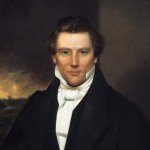

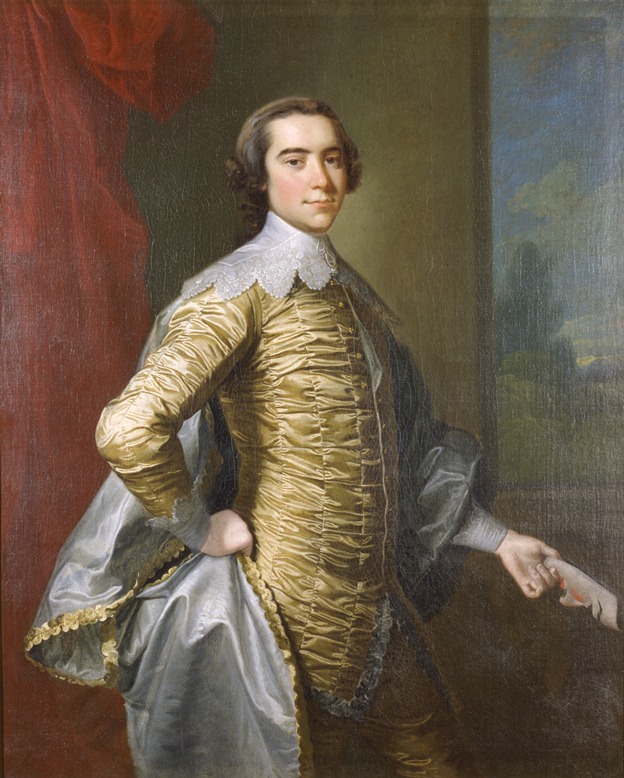

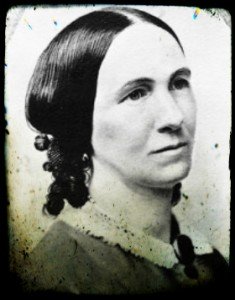
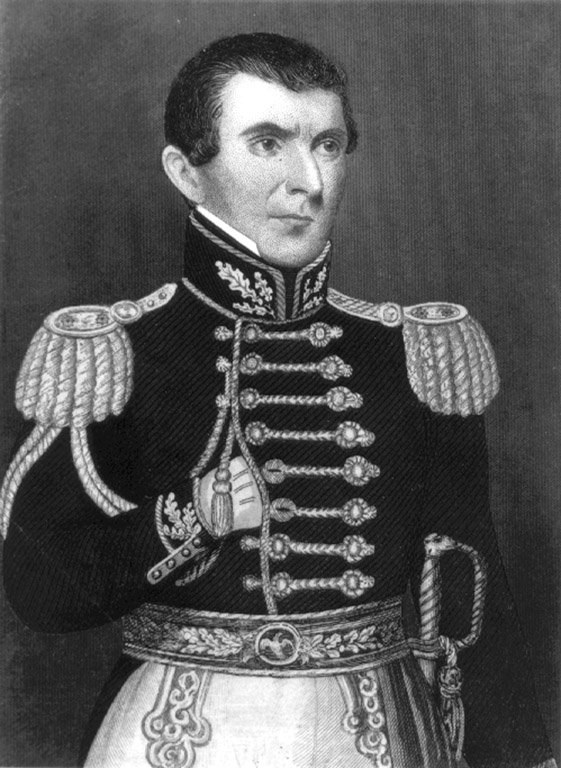




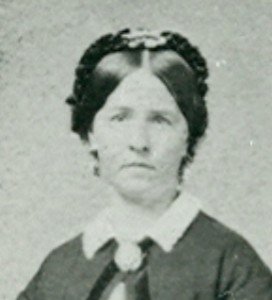


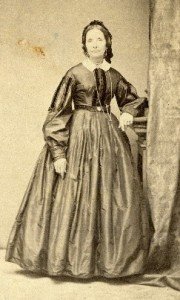
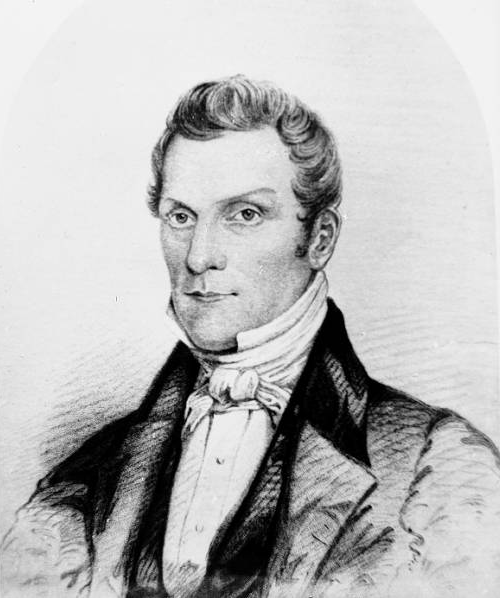
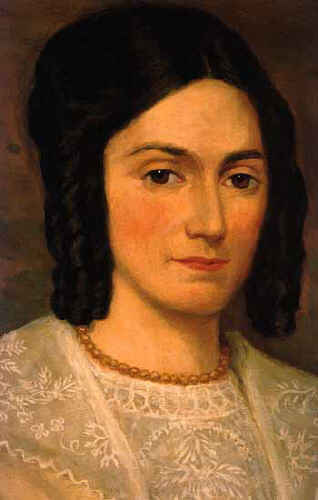

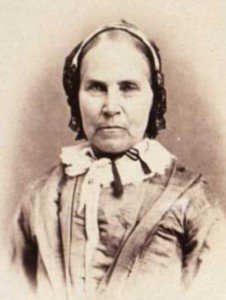
![Jane Manning [James]](https://www.millennialstar.org/wp-content/uploads/2014/06/Jane-Manning-300x197.jpg)



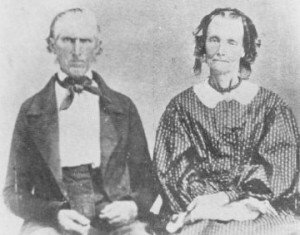
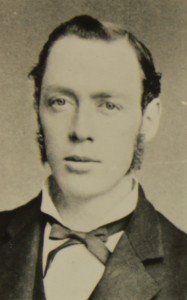
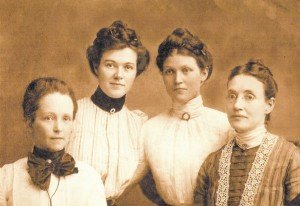


New Post: Faithful Joseph: A Digest: I was recently discussing Nauvoo with an individual who appe… http://t.co/9OhiUsWmcJ #LDS #Mormon
TheMillennialStar: Faithful Joseph: A Digest http://t.co/tYU93VOMHQ #lds #mormon
By way of notice, vague comments to the effect that this isn’t credible will not be approved. Specific comments that indicate scholarly consideration and study of the posts (versus these short summaries) are appreciated. Information about additional original resources you don’t see cited in the full articles are also appreciated.
Given the recent exmormon meme regarding my comments, I’m putting this post on mandatory moderation. Any of the M* editors can approve comments they feel are appropriate.
Both Brian Hales and I will be rather offended if you simply lump us together as two people who say the same thing. He most vehemently doesn’t like what I say about certain matters, and I don’t agree with him on numerous points.
I don’t care if you make this public, but I wanted to apologize to you. Although I was not impressed with your comments on my blog, I should not have drawn attention them. I certainly would not have done so had I known they would turn into a meme, as you noted.
Hi John,
My husband and daughter are with you in their relatively low opinion of the meat commerce explanation for Emily’s agreement to the carnal intercourse question. They think she just lied. But since her descendants (apparently) are offended that anyone would call Emily a liar, no matter how provoked, I offer the meat commerce explanation as plausible.
I don’t even mind were I to learn in some future day that Emily had lain with Joseph – she was an adult when she married him, she was given to Joseph by Emma, and though I still argue she should have conceived if she had been actively engaging in procreative behavior with Joseph in 1843, the fact that she, her sister, Flora Woodworth, and Eliza Snow appear to have been distanced from Joseph after Orange Wight’s confirmation that the marriages of these four women to Joseph were known means that she really only had 6 months of likely opportunity to conceive. However she was able to conceive her first child, Edward, well less than six months after marrying Brigham Young.
Meg, you need to win some kind of prize for your work in this area.
To get a prize, I’d have to actually write this up for an academic audience, which is on my to do list. In the mean time, I’m happy to have this on the internet where the random searcher can find it.
I think you should have this published in a book formate or something. This was a ton of work for you! Good luck
Pingback: “My Joseph”: Meg Stout and Polygamy, Part 1 | Runtu's Rincón
Hi Deborah,
The great news is that I already have a literary agent. The bad news is that I have a literary agent.
I have already formatted the content of these posts into a book format (just working on the index), but I cannot publish it without go ahead from my agent.
I also have a proposal to produce a book covering this material that is geared to a general audience who isn’t steeped in Mormon history and folkways.
What is the meme that came up about your work, Meg?
“1.Brian Hales has been described as someone who has a hypothesis and is assembling the data to support that hypothesis”
I had to laugh at this, since this is the very definition of a good scholar. A good scholar is someone that does a fantastic job assembling data to support their hypothesis. This is also Todd Compton to a T. He is also a “good scholar” for the very same reason.
I realize most people are naïve and think that a “good scholar” is someone that “follows the evidence” (whatever that means) and doesn’t “assemble data to support their hypothesis” (an obviously meaningful thing to do) but instead “forms their hypothesis out of the assembled data.” (Whatever that could mean.) Very humorous point of view, really, if it wasn’t so tragically common and also at odds with the very concept of good scholarship.
Very similar to the equally humorous idea of someone “being scientific” by not being biased when in reality good science comes out of multiple biased view points criticizing each other. What makes good scholarship is that their arguments for their hypothesis are not weak and don’t ignore counterviews. One must always form a hypothesis at some point (perhaps by reading the data through whatever filters they already have in place) and then assemble data to support your argument. That’s a good thing, not a bad thing.
Hi Bruce,
I agree that a scholar typically has a hypothesis in mind. But when data contradicts the hypothesis, the true scholar is expected to modify the hypothesis to accommodate the additional data.
Brian is one of the sweetest men I know. That said, he is slightly more inspired by his vision of what he wants than he is by the data.
Of course, the folks over at John’s blog are having a good time messing with me.
The meme regards my suggestion that Emily might have been not having sex with Joseph yet not lying if she rationalized carnal intercourse as being equivalent to meat commerce (e.g., passing a meat tray at dinner). That apparently lit up the exmo Reddit board with a vengeance.
“Brian is one of the sweetest men I know. That said, he is slightly more inspired by his vision of what he wants than he is by the data.”
Do you honestly believe this isn’t true of Todd Compton? Or of Fawn Brodie? Or of Michael Quinn? Or of yourself?
If so, I think you are sorely mistaken and are trying to make a “scholar” into something they can never be.
I suppose to a degree I agree with you. If one blinds oneself to the point he/she can’t take counter evidence and deal with it any more, then honestly that would be a bad scholar. But the end result would be a poor argument full of oversights and obvious flaws. That’s why I say a good scholar is one that can make a strong argument, not the least biased person. (Assuming such a person could exist.)
Take a look at Quinn or Compton, both good scholars in my mind. Both do modify their hypothesis as new evidence comes in, just as you state, but without a doubt you know they will always end up landing on a view that is critical of the LDS Church.
Todd Compton, for example, backed way off his book’s view that Helen Mar Kimball never had sex with Joseph due to well thought out criticism of his view. (He claims he never stated this in his book, but he left such a strong implication that most people — for or against the Church — originally read it that way).
But the first thing out of his mouth, now that he is officially claiming that Kimball and Smith never had sex, was that he still has big issues with sexless teenage marriages.
Now think about that for a moment. He literally felt the need to make sure that no matter how the history comes down, that he can somehow turn it into a criticism of a person (Joseph Smith) that no longer is alive over what he did to someone else that is also no longer alive — oh and went to her grave feeling like she only did it because God asked her two via revelation. It’s a very very strange comment if you are trying to make sense of it as Todd as a dispassionate historian trying to let the evidence lead him and not caring about what he finds so long as its factual.
But the moment you realize his whole point in writing his histories is to undermine the modern LDS belief that polygamy came from God — and through that also undermine the current LDS understanding of revelation through “prophets” — then it makes perfect sense why he felt the need to still come up with a way to condemn the behavior of a long dead historical figure over a victim that claims she is not a victim.
No, Brian Hale is not more or less biased by what he wants to see than Compton or Quinn or even yourself.
And yet the whole process works in spades, doesn’t it? With each scholar taking a moral view and advancing it and criticizing the other views? The end result is something far better than what any one of your historians (amateur or otherwise) can produce on your own.
I suppose my three big takeaways from my study of Joseph’s life and polygamy are:
1) A whole lot more was going on with John Bennett than most people credit. And this is provable stuff that is documented. I have no idea why this has been ignored, or why people persist in claiming that Bennett only did what Joseph taught him to do.
2) Joseph was desperately trying to save those he loved, which included the dead, their children and wives, the seducers, and their victims. And part of what Joseph believed constituted salvation was restoring the New and Everlasting Covenant, with its footnote requirement of restoring the possibility of plural marriage.
3) For people who were allegedly engaging in procreative behavior, there wasn’t much reproduction going on. Others, such as Bergera, have noted the difference in fertility, but obfuscated the cause of the difference by averaging all groups together.
By the way, Bruce, I think you meant to say that Compton originally portrayed the relationship between Helen Mar Kimball and Joseph to be sexual, and then later (as additional evidence was assembled by others) reverted to a position that the relationship was not sexual (but, presumably still “abusive” in, I suppose, denying Helen her dances and other youthful fripperies).
Great work Meg, I see others don’t agree with many of your conclusions. That makes it all the better for discovery. You have obviously dedicated much, Good Job. You will leave a great legacy for your posterity.
I appreciate the simple format of your website and the way that you present your evidence. My question is, why did Joseph Smith begin to marry additional women before the sealing powers had been restored by the prophet Elias in the Temple? The reason I ask is because of something I overheard my dad talking to my mom about when I was a teenager. My dad was a bishop and I heard him say that bishops were now supposed to ask if a member had ever been married when they were going through their temple marriage interview. He said the reason for that was a few BYU students had decided it was okay to run down to Las Vegas, get married, have sex, and then get it annulled right after. This way they were not breaking the law of chastity since they were married when they had sex. It seems to me, that if Joseph did want to have sex with women other than Emma, it would be much easier to convince them if they were married to him. If however, it was simply to make sure that they were sealed to him for all eternity, why did he marry them before he had the authority/keys to do so?
As a follow up, in D&C 132:63 it says “But if one or either of the ten virgins, after she is espoused, shall be with another man, she has committed adultery, and shall be destroyed; for they are given unto him to multiply and replenish the earth…” I’m not saying that Joseph did or did not have sex with his plural wives but it seems that he would be breaking the new and everlasting covenant if he did not follow through and try to multiply with these women.
Thank you for abridging your posts.
That is exciting! A book explaining the series to members, without a strong background in history, would be fabulous. There are some people in the church that have a testimony but don’t know how to explain or interpret the data. It seems to me that the narrative options for members right now is we don’t have all the details or Joseph was a pervert. While your narrative may or may not be correct, it’s possible. I find it exciting. So please publish!!!
Justin,
I’ve long wondered about that too. I’m afraid the answer I came to isn’t one everyone is going to like if they are holding to an idea that God always reveals things to Joseph in a highly organized manner.
I think Joseph only received a little at a time and often tried to implement things prematurely because he could see where things were going. I think the LDS history is rife with such realities. For example, he starts to practice sealing people unto salvation before the proper keys (and the temple!) required to do so exist. Joseph seems to have had impressions as to what God wanted, but not always exact instructions as to how to go about it. God often seems to leave it to the church leaders to seek inspiration and work out the “rules” later.
I could give you loads of additional examples where he gets ahead of himself like this and then back tracks and formalizes it under proper keys later. Even the very concept of a temple fits under this sort of pattern (with Kirtland being a non-Temple temple — only one of many! — that existed before real temples were revealed.) There are many interesting questions here that we don’t have any definitive answers to.
I should also note that Christian history has the EXACT same issue according to my attempts to study it.
“as additional evidence was assembled by others”
This is my real point, of course. The idea of the unbiased scholar is both unnecessary and unrealistic. Todd in part does it to undermine faith in the LDS Church’s current teachings about what the nature of revelation is. Brian Hale in part does it to stop people from losing faith in Joseph Smith as a prophet, as do you. (Though you do it both in very different ways.) Quinn is clearly interested in undermining faith in the Church all together (unlike Compton, who is only targeting a certain — though central — doctrine). It’s just reality. And it isn’t a bad thing.
Joseph seems to have received many revelations that he didn’t parse until time passed. I think this is true for many of us. The difference for Joseph was that the revelations he received were vital to the restoration of the Gospel. God is not restricted to linear actions. An example of the eventual destiny of Christianity was Jesus’s encounter with the Samaritan woman at the well and his healing of the centurion’s servant, both of which de facto extended the benefits of the Gospel beyond the Jews, but it was not until after Peter’s vision of the unclean foods that authority to go forth to all the earth was formalized.
I share Meg’s idea that Joseph was at the very least a reluctant participant in polygamy. I feel that in failing to fully instigate polygamy in his own life for assorted reasons that included not only Emma’s objections but his own (one non-Mormon described him as a ‘pure minded boy’), he set in train the events that resulted in the currently popular opinion that he was a libertine.
God turns all things to his own purposes and one of the results of all the hoopla over Joseph’s perceived indulgence is a much higher public awareness of the Church. I know of three recorded instances of conversions that occurred after viewing The Book of Mormon musical and I know several people personally who converted after having been made aware of the Church by negative information. I heard a talk years ago by a member of the missionary committee who said that after every widely published slander of the Church or its founder there was a discernible rise in inquiries and baptisms.
“While your narrative may or may not be correct, it’s possible. I find it exciting. So please publish!!!”
I totally agree with this sentiment. Get your theory out there and let people make up their own minds.
Hi folks,
I was amused by John’s analysis of my narrative (the pingback to Runtu’s Rincon). We had also corresponded a fair amount privately in the past few days.
He is unable to actually unpack and examine the facts, but attacks me for putting forward a different narrative to facts he believes can only fit the Fawn Brodie framework for Joseph’s life.
While he roundly accuses me of fantasy and making things up, he never did respond with the supposed “facts” he claims I am ignoring (despite many calls for him to do so).
Everyone is familiar with the fact that the Mountain Saints tried mightily from the 1850s through the 1890s to portray Joseph not only as having taught polygamy but also having been an active sexual participant in his plural marriages. This surged in the late 1860s, when Joseph’s sons first visited Utah to try to convert their father’s followers back to a monogamist version of Mormonism. At this point we see Andrew Jensen and Joseph F. Smith collecting information regarding the women who had married Joseph Smith, and from these collections we get indications that women were his wife in deed and that Emma knew about certain of the marriages. But there is nothing in the affidavits that explicitly and unequivocally could be interpreted as actual confessions that sex occurred.
It is in the 1890s during the Temple Lot trial that men and women testify with the intent of portraying Joseph as a practicing polygamist. We hear of times he shared rooms with women, even shared beds with women. But the only one of these testimonies that actually appears to indicate sex is when Emily Partridge was asked if she had carnal intercourse with Joseph, and she answers “Yes, sir.”
What other answer could she possibly have given, if she didn’t want to derail the Church’s entire position? Saying, “No, not carnal intercourse. But we were in the same bed…” would have completely negated all she had said leading up to that point and called all the other testimony into question.
Emily had spent decades as the wife of Brigham Young. Sarah Lawrence had gone on record claiming no sex occurred in her case, Maria Lawrence was dead, and Eliza Partridge was dead. Eliza Snow was dead. Emily was the only one of the women “known” to be Joseph’s plural wife during his lifetime left. If she had said she hadn’t had carnal intercourse with Joseph, the entire thing the Saints had spent decades focusing on as the core of their religion would be put in question.
I’ll just leave it with the possibility that Emily Dow Partridge [Smith Young] had an overwhelming motive to lie, if in fact she hadn’t had carnal intercourse with Joseph. Therefore I can’t accept as simple fact that she had sex with Joseph merely because she answered “Yes, sir” to that question.
Pat C,
“God turns all things to his own purposes…”
Amen sistah.
Brigham Young said: “Every time you kick ‘Mormonism’ you kick it upstairs; you never kick it downstairs. The Lord Almighty so orders it.” (Discourses of Brigham Young, sel. John A. Widtsoe, Salt Lake City: Deseret Book Co., 1941, p. 351. Or Journal of Discourses 7:145.)
Brigham’s next line in the sermon was pretty good too: “And let me tell you that what our Christian friends are now doing for us makes more for the kingdom of heaven than the Elders could in many years preaching.”
Online Journal of Discourses, JD 7:145
http://www.journalofdiscourses.org/volume-7/
Also Quoted by Carlos E. Asay, Ensign Nov 1981, in a conference talk “Opposition to the Work of God.” https://www.lds.org/ensign/1981/11/opposition-to-the-work-of-god?lang=eng
Elder Asay’s talk also deals with sowers of doubt and how to handle them.
Some more cultural references:
The Jesus character in this Saturday Night Live skit tells the Tim Tebow character that Mormonism is true. http://www.hulu.com/watch/311565/saturday-night-live-tebow
(Hat tip to Eric Nielson of Small and Simple. http://smallsimple.wordpress.com/2011/12/18/mormonism-its-all-true-every-single-word-jesus-himself-said-so-on-saturday-night-live/
)
BTW, here’s a link to the particular clip in the South Park episode where the cruise director in hell gives “The Mormons” as the answer to which church was right:
http://www.southparkstudios.com/clips/152270/abandon-all-hope
Granted, the writers intended those pieces to mock the majority or mainstream Christian religions, and Mormonism. But still, the look on the faces of those writers and actors is going to be priceless when they do come to realize (in the next life) that the answer REALLY WAS “The Mormons.”
Meg:
Great work! I think you are bringing out the true Joseph Smith that we all want to believe in. I know that the evidence seems to show that polygamy was merely a justification for adultery. But we know better than that. Joseph Smith was a prophet and prophets simply do not act that way. So keep it up and remember that possibility in this context equals truth because we must give Joseph the benefit of the doubt.
Dave, I generally agree with you, but I would like to point out that my faith in Joseph Smith as a prophet will remain regardless of what is “proven” about his actions regarding polygamy. Meg has done a great job of providing an alternate view, a revisionist history that challenges the status quo. I consider her work extremely valuable. But let’s say that some letter from one of Joseph’s wives is unearthed some day and it shows beyond a doubt that Joseph Smith did have sex with his wives other then Emma. This will have zero influence on my opinion of Joseph Smith as a prophet. I am willing to put these actions in the general category of: “I simply don’t know.” And I am OK doing that.
My feeling also. I made the business of polyandry a subject of prayer a few years back, and the answer I got more or less boiled down to, “Nevertheless, he was My servant.”
Meg,
Runtu is so obviously anxious to put you into a narrative framework that makes him feel comfortable that I doubt you’ll be able to have an intelligent conversation with him.
I almost made a post on his site pointing out that I *didn’t* agree with you, but it was obvious to even me that he’s being superbly small minded anyhow, but then decided to not bother.
As I’ve mentioned, I don’t even agree that my arguments prevent the possibility that Joseph was a sexual participants in his plural marriages. However I am pointing out that the data is not conclusive, despite how often people say it is.
In fact, if this was a magic trick, people would be able to identify all kinds of tells that the “trick” was false. Like the fact that there are no children that can be positively identified as being engendered by Joseph.
[Cue lots of discussion about non-procreative sex and abortion and low fertility rates among moderns that are presumed to be representative of 1840s individuals, except that these individuals went on to be significantly fertile (Joseph was demonstrably virile), abortion would have had a mortality rate of at least 50%, and non-procreative sex makes absolutely no sense given the writings in D&C 132 that supposedly mandate sexuality.]
Meg, what are you talking about? Seriously.
You say, “[John] is unable to actually unpack and examine the facts, but attacks me for putting forward a different narrative to facts he believes can only fit the Fawn Brodie framework for Joseph’s life. While he roundly accuses me of fantasy and making things up, he never did respond with the supposed “facts” he claims I am ignoring (despite many calls for him to do so).”
Would you please provide a specific example? He has 6 blog posts that do nothing but unpack fact after fact after fact. He has also publicly challenged you to provide documentary support of your statements, which you have yet to do.
Second, how has he “attacked” you? Provide an example please.
You say, “In fact, if this was a magic trick, people would be able to identify all kinds of tells that the “trick” was false.” Yes, those tells are called logical fallacies, and John compiled quite a long list of them. Can you cite a single historian that agrees with you? Anybody, literally anybody, who will go on record vouching for your work? How about Brian Hales? He’s not a historian but I’m curious what even he thinks.
Hi Andrew,
John was not unpacking his facts, but making sweeping statements about how everyone knows that many women claimed to have sex with Joseph and many women claimed Joseph may have engendered their child. These are the “facts” I have asked John to unpack. What are the individual instances where women claimed to have sex with Joseph, aside from Emily Partridge’s “Yes, sir” to the question about carnal intercourse. Given the pressure of the situation, we can not deny the possibility that she was either lying (to avoid scuttling the entire Temple Lot case) or being creatively truthful (the much-maligned “meat commerce” possibility that even my own family finds embarrassing).
John pasted in a long transcript from Joseph Bates Noble, but as the lawyers pointed out, Noble didn’t actually have proof that sex had occurred, he merely observed them remaining in the same room together. He advised them to get in bed together, but whether or not they did so (or remained together in the bed) is left to the imagination.
Many like to imagine that Joseph was having loving consensual sex with Louisa and others. Others like to imagine Joseph was having coercive/abusive sex with Louisa and others. I like to imagine that Joseph wanted to give the impression of sex, but didn’t actually want to have sex with others when it risked him losing the love of his life, Emma Hale.
In this I am guided in some part by Jonathan Harriman Holmes, who was openly married to Elvira Annie Cowles and lived in the same cabin with her for more than two years before their first child was conceived. Given Elvira’s later fecundity, “catching” a child immediately upon her husband’s return from being away with the Mormon Battalion and producing children like clockwork thereafter until age 43, I’m going out on a limb and presuming Elvira was like myself and my other ancestors – able to “catch” a child immediately, or at least definitely within a month of beginning attempts to procreate.
John supposes that I have had a spiritual experience that Joseph refrained from having sex with his plural wives. That is nonsense. The only spiritual experience I had related to this matter was feeling strongly impressed to write about Elvira, her daughters, and her grand-daughters, an impression about which I subsequently spent a lot of time arguing about in prayer, if you will.
I am mainly pointing out that there is plausible deniability, along with a rich history related to Bennett and illicit intercourse/spiritual wifery that has been almost entirely ignored in the modern conversation about Joseph, his teachings, behavior, and death.
Brian Hales is chuffed with me, in part because I have specifically pointed out the alternate possibilities for the 12 women for whom he claims there is solid information to support the likelihood of sexuality. But given that he includes Mary Heron [Snider] and Olive Frost [Smith Young], I am not impressed with his standards. I think he has included these tenuous cases to prove that he isn’t the apologist he has widely been accused of being.
Brian is also angry at me because he feels I have tarred the reputation of Eliza Snow, Vinson Knight, and others. We had extensive e-mail discussions about my original concept, that Eliza fell down the stairs when she actually was large with child, on the closing day of the school. Brian technically won that argument, I eventually agreed that it was not plausible that Eliza could have been largely pregnant when the fall occurred, despite the much-repeated story from Charles C. Rich. But this discussion led me to examine Eliza’s poetry for alternate possibilities, and that’s when I found her writings about death and the vile wretch who had fed on the blood of innocence side by side and face to face.
Brian’s wife has corresponded with me, asking why I thought John Bennett returned to Nauvoo in 1843, and I cited the reference from Andrew Smith’s biography of Bennett, Saintly Scoundrel. She not only verified the information, she shared the information about the flour Bennett bought at the same time as paying rent.
Regarding me tarring the reputation of loved ancestors (Vinson Knight being one of those who believed Bennett’s teachings regarding spiritual wifery, Eliza Snow having been seduced by the “vile wretch,” etc.) I am not the one who wrote the poems and journals from which these inferences are drawn.
I have had an extended discussion with Andrew Ehat, who was writing his PhD dissertation on Joseph Smith and Polygamy, and is the reason that there is even a partial transcript of the Clayton Journal from 1842-1844 (Ehat didn’t try to make them public, but others copied his notes and published them). I would be quite interested to continue the discussion with Andrew Ehat.
The interesting thing is that as you get closer to real historians, the less they are willing to opine about things that aren’t actually their main field of study. These have advised me to write these hypotheses up in a scholarly article and submit it to the cadre of scholars who are considered experts in this field. Such historians will not typically come engage me online. I do have an agreement with one well-regarded scholar to discuss these matters for the public record in June, after this individual’s work load relaxes a bit. Thus I am proceeding at the normal snail-like pace of scholarly research to get my drubbing at the hands of the establishment. Meanwhile, those who can accuse Joseph at the speed of snarky commentary on every media discussion of Mormons will have produced their millions of damning tweet-length snippets.
Some are offended that I would imply Emily Partridge lied. But these same people are perfectly willing to ignore Emma Hale’s insistence that she was Joseph’s only wife, the report of William Mark regarding Joseph’s concern, in 1844, that the plural wife thing had gotten out of hand, and the lack of reproductive proof that Joseph had sex with other women. We live in a day when anyone can have their autosomal DNA tested for the cost of a nice lawnmower, with databases helping link up distant cousins. Such research can illuminate such matters as a man who was kidnapped by the Indians and then rescued, showing that he has descendants from his known white wife, but also from an Indian woman he appears to have been married to while with the Indians. In such a wide, brave, world, and given the reproductive habits of Mormons (lots and lots of kids, who go on to have lots and lots of kids), we should be able to find any number of Joseph’s descendants through other women, if any secret progeny survived to an age where they could procreate.
Your response tells me John has posted additional critiques, so I’ll wander over to his site and see if he has unpacked. Delightful fun if he has.
I’m glad you are amused by my small-minded request that you provide documentary support for any of the assertions you have made. If there’s a “framework” I am comfortable with, it is one that sticks to the evidence and avoids fantasizing about the Joseph Smith we all want to believe in.
I’ve tried very hard to be polite and respectful, and you have not returned the favor. So, I’ll just leave it at this: please provide documentary evidence for your assertions (a partial list of which appears on my blog). That shouldn’t be hard to do, right?
Hi John,
You had been reading the footnotes to my posts, I hope. I look forward to coming over to you posts and engaging some more.
I assert that you have confused the narrative of those in the tradition of Fawn Brodie for fact, and thus you feel that I need to provide documentary proof for the narrative that I use to connect the facts, my framework. But just as past researchers have supposed things to explain their narratives, I am also permitted to suppose things.
The case of Mary Heron [Snider] is one of these. Michael Quinn and Brian Hales have supposed one interpretation of an ambiguous record. I have pointed out what I feel to be significant logical flaws in those suppositions and suggested an alternate interpretation of the ambiguous record. The scribe was clearly leaving many words out of his record, thus it is entirely ambiguous what question prompted the response “By Joseph.” Quinn and Hales have presumed that the answer was responding to the question “By whom was your mother-in-law xxxxxxx?” and I have presumed that the answer was responding to the question “By whom were you informed about the xxxxxxxx of you mother-in-law?” And given the ubiquity of the name Joseph, it is even a stretch to assert that “By Joseph” necessarily meant Joseph Smith.
My conclusions have nothing to do with Fawn Brodie. Not sure why you think that. Either way, you seem to think my main objection to your thesis is that I believe Emily Partridge said she had sex with Joseph. That is not my objection at all.
Maybe we’re just talking past each other. Oh, well. I’m glad you find me amusing in my small-minded way.
Andrew, take a look at what Meg says in this comment:
https://www.millennialstar.org/faithful-joseph-digest/comment-page-1/#comment-148367
She has in fact stated multiple times that there may well have been sexuality in some of Joseph’s marriages other than Emma (where there is no doubt at all.)
However, compare this to Runtu’s portrayal of her position:
“Basically, then, she believes the lack of proof that Smith fathered children is evidence there was no sexuality in the marriages”
Or how he treats her view as “needless” to say that it’s just her trying to save her testimony.
“*Needless to say*, what she is doing is trying to find an explanation of Joseph Smith’s behavior that doesn’t conflict with her testimony that he was a prophet” [emphasis mine]
I’ve warned Meg multiple times about this. Unless she loudly states that Joseph may have well be sexually involved with some of his wives, most people that read her views will end up believing that she is saying that she knows Joseph didn’t have sex with his wives, which is *not* what she is saying. I feel Meg didn’t heed my warnings on this as much as she should have and the result is people like Runtu that have misunderstood her point but are quite literally incapable of understanding that they are misunderstanding (presumably in part because they find the false narrative just too juicy to pass on for the sake of making mockery of.)
Now maybe you’re just like Runtu, in which case I’m wasting my breath. But on the off chance you actually are interested in the truth, here is what the two of them are arguing.
Runtu’s argument:
1. The wives of Joseph Smith said they had sex with him, so they did. That is certain and beyond doubt.
2. Meg is being silly because she’s arguing that because there is no hard proof (i.e. things like actual children being born) that that means we must believe Joseph Smith was not sexually involved with his wives. That’s just a dumb argument from silence and its lame and Meg is only saying that because she’s a stupid Mormon that needs to save her testimony and she doesn’t know what she’s talking about.
Meg’s argument:
1. It’s true that several of the wives left the impression that they had sex with Joseph Smith, but they only did so very late, and only when specifically asked to in a court setting where the LDS Church desperately needed them to make their marriages to Joseph Smith seem as real and consummated as possible. Therefore, it only happened when there was reason to mislead or lie. Therefore, these testimonies are to some degree suspect. That doesn’t mean they didn’t have sex with Jospeh, I’m just saying it’s not certain evidence.
2. Other corroborative evidence that would have left no doubt – like say children being born – is entirely absent.
3. So I conclude that there is nothing certain here. Joseph may have had sex with his other wives, or maybe he didn’t. There is room for doubt and we can make a case for either point of view.
4. I am open to the possibility that maybe none of the marriages of Joseph Smith (save Emma) were in fact sexual. This may not be true, but it’s a possibility.
It’s just not hard to see that Meg’s argument is stronger than Runtu’s. That’s not because it’s more likely that Runtu is wrong – i.e. that Joseph Smith only had sex with Emma (we can’t know that for sure anyhow, it’s just speculative) – but because Runtu is clearly misreading Meg’s argument and Meg is properly responding to Runtu’s.
It is in this sense that Meg is correct that Runtu is unwilling or (I’d say) unable to unpack the facts of her arguments. To Runtu, their testimony is certain, end of story. Everything else is silly and he won’t even consider the possibility at all. Period. Even to just respond to someone else’s argument.
Now it wouldn’t take much for Runtu to improve his argument considerably – namely the same way Meg could improve hers. He could at least acknowledge that she’s right that the evidence he considers *certain* isn’t certain. How often is evidence ever certain? Instead, if Runtu wanted to strengthen his argument, he could say “well, yes, it’s uncertain, and yes, it’s possible they were misleading because of the LDS Church’s needs at that time, but I’d have to say I still consider this pretty strong evidence. It seems more likely (whatever that means in this context) to me that they told the truth when under oath and that they weren’t misleading. I think its likely the innuendo employed had more to do with being women of the 19th century that a desire to mislead about their marriages to Joseph.” That’s really all it would have taken to go from coming across as sort of mean and small minded to someone making a serious argument from facts and using reason. This is what Meg is complaining about and she’s right as far as it goes.
Meg, you really need to do more to make it clear that you accept the possible sexuality in Joseph’s other marriages. At this time most people will tend to see your argument the way Runtu does. People aren’t capable of nuance, that’s just a fact. Most are like Runtu, I’m afraid. You are accidently giving them fodder. You could really improve the strength of your argument by making it very clear you’re open to that possibility and that you are really just showing our level of ignorance and that nothing is at all certain and that we don’t know.
Runtu’s argument:
1. The wives of Joseph Smith said they had sex with him, so they did. That is certain and beyond doubt.
This is a lie, plain and simple. I have never said anything like that.
2. Meg is being silly because she’s arguing that because there is no hard proof (i.e. things like actual children being born) that that means we must believe Joseph Smith was not sexually involved with his wives. That’s just a dumb argument from silence and its lame and Meg is only saying that because she’s a stupid Mormon that needs to save her testimony and she doesn’t know what she’s talking about.
Meg’s argument:
This is also a lie. I have never said anything like that, either. Kindly stop putting words in my mouth.
1. It’s true that several of the wives left the impression that they had sex with Joseph Smith, but they only did so very late, and only when specifically asked to in a court setting where the LDS Church desperately needed them to make their marriages to Joseph Smith seem as real and consummated as possible. Therefore, it only happened when there was reason to mislead or lie. Therefore, these testimonies are to some degree suspect. That doesn’t mean they didn’t have sex with Jospeh, I’m just saying it’s not certain evidence.
I have no problem with that. I think the evidence is stronger than that, but there you go.
2. Other corroborative evidence that would have left no doubt – like say children being born – is entirely absent.
I don’t think that’s a good argument.
3. So I conclude that there is nothing certain here. Joseph may have had sex with his other wives, or maybe he didn’t. There is room for doubt and we can make a case for either point of view.
I don’t think there’s a good case for no sex, but I don’t have a problem with people who believe that. I agree with you that nothing is certain. What I have a problem with, and what you and Meg seem to have missed, is when people veer off from “plausible deniability” and start inventing things like deathbed conversations, confessions of adultery, and investigations of sex rings. There’s no evidence for any of that. And yet Meg’s entire thesis rests on these inventions. That’s not good history, and if saying so makes me a bigot, so be it.
4. I am open to the possibility that maybe none of the marriages of Joseph Smith (save Emma) were in fact sexual. This may not be true, but it’s a possibility.
I am open to that possibility, as well, but I don’t see any reason to believe that.
“please provide documentary evidence for your assertions”
Runtu, are you *really* asking her to provide documentary evidence that Joseph Smith *didn’t* have sex with someone? As it turns out, I can’t even provide documentary evidence that Joseph Smith didn’t have sex with Mary Todd Lincoln. Does that mean that he did? Your request is no better than this. Or at least it isn’t once we understand Meg’s actual argument rather than the one you keep forcing upon her. (If Meg was in fact saying that there is evidence Joseph Smith didn’t have sex with his wives other than the lack of children, then your request for documentary evidence would actually have made sense. But since she isn’t arguing that, your request makes no sense at all.)
Runtu, I shouldn’t have called you “small minded’ (that was me, not Meg) I admit. My apology. But you are coming across far less polite than you think you are.
But you are, without a doubt, misunderstanding her argument. You need to back off a bit. Once you can accept that she isn’t claiming she has proof that Joseph Smith’s marriages were not sexual you’ll be able to engage her without coming across so bad.
Meg:
Why is it so important to you that Joseph Smith did not engage in full marital relations with his plural wives? Certainly Brigham Young did and the presidents who followed him did as well until polygamy was abolished. In fact, I believe that even you would admit that Brigham Young and several of these presidents married and had relations with teenage plural brides. So why is it o.k. for them and not for JS? Do you think that the RLDS was the right church? Were the subsequent “prophets” wrong to have relations with their plural wives?
As I’ve wandered around the web, I’ve noticed folks making simple statements that I’m making things up or fantasizing or being dishonest.
When I started posting about a Faithful Joseph, I knew that my framework, though grounded in fact, is so wholly different from the traditional narrative that it would cause cognitive dissonance for some.
Intriguingly, those who followed the series last year often reported that my posts were providing them “A ha!” moments, allowing them for the first time to reconcile facts that had puzzled them for a long time.
With this digest, I am hearing from those who have bought into the conventional narrative and are not operating from the facts themselves. Thus my framework, though based in fact, is wholly contrary to the higher-level roll up of the current narrative (Joseph had lots and lots of sex with his plural wives, all non-monogamous sex in Nauvoo was somehow inspired by Joseph, etc.).
I have requested that folks bring forward the fact(s) they feel destroy my framework. This they haven’t done. They have repeated parts of the historical record that they find compelling, but this is not new and was already accounted for in my framework. They have repeated as first hand statements discredited rumors (e.g., V. Ettie Coray’s assertion that she heard Delcena state she didn’t know who was the father of her child).
They have claimed there was never an 1831 revelation. Alas, this is mentioned in the History of the Church and by many other scholars. This is not my invention. I was just saying that it isn’t known by most Mormons. It also predates the counsel to certain missionaries to take wives from among the Lamanites.
They have claimed there was no investigation. I’ll admit the mechanics of the investigation are not well known. However that will be the subject of the first article I submit for scholarly consideration, since I think the evidence for this is obvious and should be better known (and peer-reviewed, etc.).
They have claimed that many of Joseph’s plural wives asserted their marriages were sexual and several claimed they didn’t know who had fathered their children. This is what I have asked them to “unpack.” List these women and the citations where sexuality was claimed. List the women who didn’t know who fathered their children and what, exactly, was said. These are details I want to know, because I know of no credible reports that necessarily and unambiguously assert sexuality, save the admission under oath by Emily Partridge that she had engaged in carnal intercourse with Joseph. The tantalizing discussion Sylvia Sessions [Lyons] had with her daughter, Josephine Lyons [Fisher] is ambiguous and the DNA data inconclusive but far less strong than one has a right to expect were Joseph actually Josephine’s father.
If any of the plural wives consummated their relationship with Joseph, Emily should be on the list. Emma knew of the marriage and Emily lived in the Smith home for several months after the marriage. But I point out that no child is known to have been engendered in this plural marriage or indeed in any of Joseph’s plural marriages. And when Emily admitted to carnal intercourse, it was the entire point of the trial for the Church in Utah to prove that Joseph had been a practicing polygamist. Therefore Emily was under pressure to ensure that the court found Joseph to have been sexually active with his wives.
All other “admissions” are cloaked in euphemistic language that would be true even if no sex had occurred, which could either just mean that the women were prudish or it could mean that they were trying to imply more than had actually happened. When the friends and families of these women attempted to get the “real scoop” in private, all the women I know of refused to confirm or deny. In a culture where it would be a badge of honor to have been bedded by the prophet and where any child born to a plural wive with Joseph as a father would be heralded as therefore wonderful, there is no reason for these women to have refused to answer if the answer were yes.
Besides, we live in a day when autosomal DNA testing is routine. If Joseph engendered children who lived to reproduce, we should be seeing the descendants of these children showing up as related to the Smiths.
I feel somewhat like an individual who has said the emperor is wearing no clothes, except unlike the child in the stories, I’ve got folks willing to damn me for dishonesty and pillory me for being the only one who has said there are no clothes. “Did the Viceroy agree with you? Then he must not be naked!” is the sort of argument I am encountering.
When I was young and in college, our English professor assigned a paper that, as I recall, had to do with comparison of alternatives. One of my classmates wrote a paper about the various properties of different sorts of condoms (this was not at BYU). Another man, who I think came from Nigeria, wrote a paper about all the ways to win an argument with a woman. It involved tactics like belittling her, threatening her with violence, attacking her family, yelling at her, etc. I wish I had a copy of that paper, so I could validate why I feel that some of the comments about my efforts here resemble the calculated attempts to win an argument that I saw in that college paper.
“I feel somewhat like an individual who has said the emperor is wearing no clothes, except unlike the child in the stories, I’ve got folks willing to damn me for dishonesty and pillory me for being the only one who has said there are no clothes.”
Meg, it was pretty much inevitable that you be damned and pilloried when you decided to challenge the scholarly “consensus.” This consensus was “of course Joseph had sex with many of these women.” You have created room for doubt on this issue, and in so doing you are challenging a narrative that is incredibly important to maintain for the anti-Mormons and ex-Mormons and questioning Mormons. They are heavily invested in this narrative. I would argue that it is more important to their worldview than Joseph’s possible sexual activity is to your worldview. Thus the frustration on their part.
People who challenge existing paradigms — when the majority is heavily invested in the “consensus” — will always be damned and pilloried.
When terrible things happen at work, I like to take a deep breath and comment to those in earshot that I am happy to consider the possibility of an omniscient God who will in some future time share His perspective on what is going on. This is one of the things that allows me to “let go and let God” as some say.
As for being damned and pilloried, I suppose God might say that these things are for my good and for my experience. And in fact I have engaged in this dialogue in significant part because I can’t be with people who are excited by this alternate framework that fits the facts. I figure it will be helpful to them to know that merely because they may find reason and support doesn’t mean that those who might be attacking their belief in Mormonism and an honorable Joseph Smith will necessarily respect the rational basis for this new framework.
Various people are shouting me down because they don’t like what I am saying. But merely screaming at a person does not make them wrong or invalidate their intrinsic worth. In light of the possibility of an omniscient God, the opposite would be true.
To Dave’s question about why I am so intent of showing Joseph might not have had sex, while there is no question that later prophets had plural wives with whom they had children, including young wives.
I dislike sloppy scholarship. Prior to the DNA evidence coming to light, there were many statements made, and given that there appeared to be a small handful of children born, it appeared Joseph had had sex with a few women. Though no one knew of any children born to Joseph’s otherwise single wives, we all just wanted to put the issue into a deep dark hole and ignore it. Who really wants to talk about the fact that Joseph’s only children were born to women he had persuaded into polyandry? So those who honored the Church just let the matter alone, while those anxious to condemn Joseph and the Church spread the most vile inferences.
But now we have DNA evidence that shows that none of the testable cases can prove Joseph to have been father, with all but the case of Josephine Lyons definitively proving Joseph wasn’t the father. [edited to point out that DNA analysis now proves the descendants of Josephine Lyon are NOT related to Joseph Smith, Jr.] Everyone else has been so eager to declare Josephine a biological child to Joseph that no one had tried to understand why Sylvia might have told Josephine her father was Joseph in Sylvia’s deathbed. But there is a reason, and it’s a reason that would not apply to Sylvia’s other children, because Josephine was the only one of Sylvia’s children to reach adulthood and marry outside the temple, therefore not being informed of her covenant relationship to Joseph.
So here is a research question for someone who lives in Salt Lake City. Study the marriage records for the children of Joseph’s plural wives. See how many of these children are recorded as having the last name of Smith (the example I am certain of is Marietta Holmes being recorded as Marietta Smith on the day she marries Job Welling(s)). Look at the record for Josephine’s sealing two years after her original marriage and see who performed the ceremony. If her sealing was performed by Brigham Young, then my theory is singed, though still possible. However if the sealing was performed by some random temple sealer who wasn’t part of the inner circle in Nauvoo, my theory is more plausible. And if we see many of the children of Joseph’s covenant wives somehow documented in those temple records as being “Smiths,” even though conceived long after Joseph was dead, then it would be significant if Josephine’s sealing does not record her as “Smith” (unless it does record her as “Smith,” in which case my theory is blown out of the water rather than merely being singed).
Given that Brian Hales is supposed to be the apologists’ bastion of hope, I am officially horrified that he includes Mary Heron and Olive Frost as women he claims had very likely been sexual partners with Joseph Smith. I’m not as adamant about the other women, aside from wondering where the children are if there was all this sharing of rooms, beds, and carnal stuff.